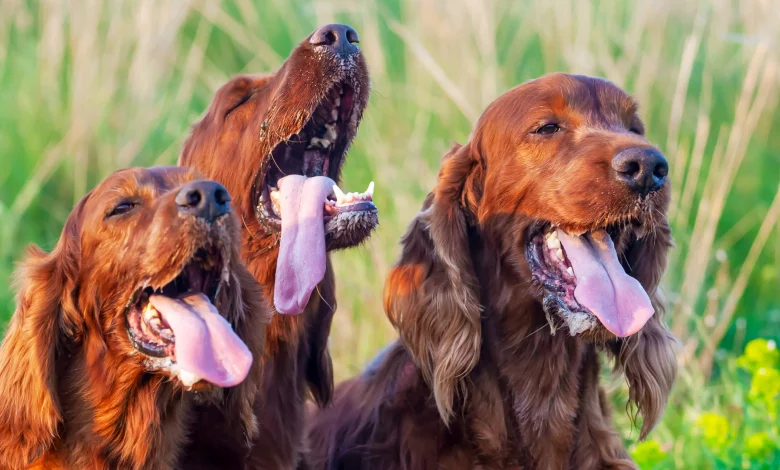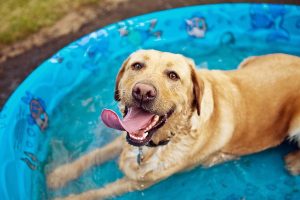Decoding Dog Breath: Understanding Excessive Panting in Dogs
Understanding Excessive Panting in Dogs

As pet owners, we all want to ensure the health and well-being of our beloved furry friends. It can be concerning when we notice our dogs panting excessively, especially if it seems out of the ordinary. Excessive panting in dogs is a common concern that can indicate various underlying issues. Understanding the causes and implications of this behavior is crucial for providing appropriate care and ensuring our dogs’ comfort. In this article, we delve into the world of excessive panting in dogs, unraveling its mysteries and shedding light on the potential reasons behind it. By gaining insight into this phenomenon, we can better address our dogs’ needs and promote their overall health and happiness.
So, let’s explore the fascinating world of excessive panting and discover how we can support our furry companions in their journey towards well-being.
Explaining Excessive Panting
Excessive panting in dogs refers to a prolonged and intense form of panting that goes beyond what is considered normal. It is characterized by rapid and exaggerated breaths, often accompanied by other observable signs such as heavy breathing, excessive drooling, and an increased heart rate. This behavior can be triggered by various factors, including heat and humidity, stress or anxiety, physical exertion, pain or discomfort, and underlying medical conditions.
By understanding the characteristics and potential underlying reasons for excessive panting in dogs, we can better identify when it is a cause for concern and take necessary steps to address any underlying issues. Monitoring our dogs’ behavior, providing a comfortable environment, and seeking veterinary advice when needed can help ensure their well-being and overall health.
Identifying Triggers and Providing Relief
Identifying triggers that may cause excessive panting in dogs is crucial for understanding and addressing this behavior. Here are some insights into common triggers:
1. Hot Weather
Dogs are more prone to excessive panting in hot and humid conditions as they regulate their body temperature through panting. Be mindful of providing shade, access to cool water, and avoiding prolonged exposure to high temperatures.
2. Strenuous Exercise
Intense physical activity can lead to excessive panting in dogs try to cool down and recover. It’s important to gradually increase exercise intensity and duration to prevent overexertion and monitor your dog’s panting during and after exercise.
3. Stressful Situations
Dogs may pant excessively in response to stressful or anxiety-inducing situations, such as fireworks, thunderstorms, or unfamiliar environments. Recognizing triggers and providing a calm, safe space can help alleviate stress-related panting.
4. Pain or Discomfort
Dogs experiencing pain or discomfort, whether from injuries, illness, or underlying medical conditions, may exhibit excessive panting. If you notice persistent panting accompanied by other signs of distress, it’s important to consult with a veterinarian for a proper evaluation.
5. Respiratory Issues
Certain respiratory conditions, such as brachycephalic airway syndrome or heart problems, can cause dogs to pant excessively. These conditions may require veterinary attention and management to alleviate symptoms.
By identifying triggers that contribute to excessive panting, you can take proactive steps to manage and address them. Monitoring your dog’s environment, providing appropriate exercise, managing stress, and seeking veterinary guidance when needed are key in ensuring your dog’s comfort and well-being.
Maintain Health and Wellness
Maintaining good overall health and wellness in dogs is essential to minimize the occurrence of excessive panting. Regular veterinary check-ups play a vital role in monitoring a dog’s health and addressing any underlying conditions that may contribute to excessive panting. During these check-ups, veterinarians can assess a dog’s respiratory function, heart health, and overall well-being, providing necessary preventive care and addressing any emerging issues.
Proper hydration is also crucial in preventing excessive panting. Dogs should have access to fresh, clean water at all times, especially during hot weather or periods of increased physical activity. Sufficient hydration helps regulate body temperature and aids in cooling down, reducing the likelihood of excessive panting.
Creating a suitable environment for your dog is equally important. Providing a comfortable and well-ventilated living space helps prevent overheating and promotes a sense of calm. Ensure that your dog has access to shade, adequate airflow, and comfortable resting areas. Avoid exposing them to extreme temperatures or stressful situations whenever possible.
Regular exercise is beneficial for dogs’ overall health and can help prevent excessive panting caused by pent-up energy or restlessness. Engaging in regular physical activity, such as walks or playtime, helps dogs expend energy, maintain a healthy weight, and improve their cardiovascular fitness. However, it is crucial to avoid excessive exercise, especially in extreme weather conditions, as it can lead to overheating and excessive panting.
In a nutshell, excessive panting in dogs is a common behavior that can be triggered by various factors. It is important for dog owners to understand the causes and implications of excessive panting to ensure their furry friends’ well-being. By recognizing the signs, identifying triggers, and taking appropriate measures, such as providing a suitable environment, managing stress, and seeking veterinary care when necessary, you can help alleviate excessive panting and promote your dog’s overall health and happiness. Remember, every dog is unique, so it’s essential to pay attention to your dog’s individual needs and consult with a veterinarian if you have concerns about their excessive panting. With proper care and attention, you can help your canine companion stay cool, comfortable, and content.


